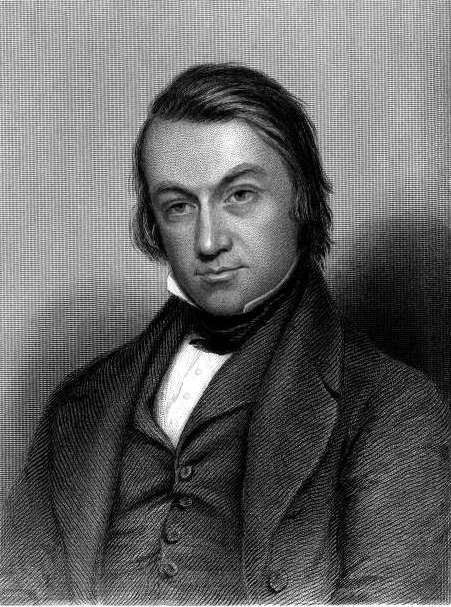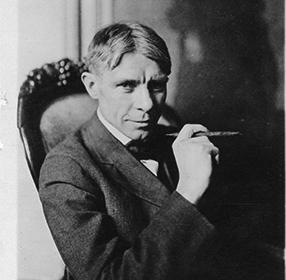Introduction to the Poet:
Henry Charles Bukowski (born Heinrich Karl Bukowski; August 16, 1920 – March 9, 1994) was a German-born American poet, novelist, and short story writer. His home city Los Angeles’ social, economic, political background influenced his writing. His writing deals with the lives of poor Americans, downtrodden of American society, alcoholism, relationship with women, the act of writing and drudgery of work.
Born in Germany and brought to the United States at the tender age of two, he had grown up seeing the society and culture of US. Beaten by his father at the tiniest of offences, bullied by boys of his own age and later on being rejected by women due to his complexion; he was in misery.
Attending Los Angeles City College and dropping out during World War II, he went to New York with the endeavour of becoming a writer. In 1946, he gave up writing and thus followed ten years of no writing which he called “ten-year drunk” in his autobiography. Ending up near death in Los Angeles, Bukowski started writing again, though he would continue to drink and cultivate his reputation as a hard-living poet. He did not begin his professional writing career until the age of thirty-five.
Ham on Rye, Post Office, Dinosauria, We, Darkling, The Soldier, The Wife And The Bum, Notes of a Dirty Man are some of his famous works.
He died of leukaemia on March 9, 1994, in San Pedro, aged 73.
Trapped:
The poem ‘Trapped’ by Charles Bukowski talks about a woman and his love for her. His love was also associated with expectations that reigned high. Unfortunately, the lady couldn’t meet it. This poem is a reflection of men’s desire and the dejection that they face, which turns into an inexpressible emotion.
The setting of Trapped:
The poem is set at a time when Bukowski tried to portray the love that he possessed for a woman but was left by. When the art of seduction soared high and when ladies tried to seduce by their posture with hats on. The setting of the poem is rather of lonely thought.
Poetic devices in Trapped:
The poem is written in no rhyme scheme.
Imagery:
“don’t undress my love
you might find a mannequin:
don’t undress the mannequin
you might find
my love.”
This creates an image of the lady love being undressed and her body was undressed too, giving out a spectrum of emotions ranging from amatory to amazement but focusing on the love that the poet had bestowed on her.
“she’s trying on a new
hat
and looks more the
coquette
than ever.”
This creates an image of the lady in a hat, looking seducing.
Symbolism:
A mannequin is a symbolism of an extremely beautiful woman without feelings of emotions.
A mannequin is a symbolism of an extremely beautiful woman without feelings of emotions.
Undressing the mannequin is exposing her emotions.
“she is a
child
and a mannequin
and death.”
Child refers to innocence and purity.
Mannequin is beauty and death is an inevitability.
Repetition:
“undress” is repeated twice. Once, to mean to undress the body, and the other, to expose the soul.
Summary of Trapped:
“don’t undress my love
you might find a mannequin:
don’t undress the mannequin
you might find
my love.”
Bukowski talks about a woman that he had loved. The poem itself starts with a seductive tone with the scene of undressing. He asks his love not to undress else she might find a mannequin. A mannequin is a beautiful piece of articulated doll used for displaying clothing. Here when he says that on undressing she might find a mannequin, he means to say that the woman was physically appealing and might have lacked emotion at that point. However, on undressing the mannequin here means to draw the extreme emotions out of them, that is undressing the body, that is exposing the soul. On exposing the soul and undressing the body, exposing the emotions, the poet’s love can be found.
“she’s long ago
forgotten me.
she’s trying on a new
hat
and looks more the
coquette
than ever.”
This means that the lady had forgotten him long back and now, trying on a new hat, she tries to seduce others. However, this is a complete contrast to the previous sentence. This is as if a tone saying that though we pretend to have forgotten someone, they reside in our heart.
“she is a
child
and a mannequin
and death.
I can’t hate
that.
she didn’t do
anything
unusual.
I only wanted her
to.”
The last few lines mean to say, her mind was pure like a child, she was as beautiful as a mannequin and her presence was as inevitable as death. However, in spite of all these, the poet expected more out of her and thus he was dissatisfied. Out of this dissatisfaction, his actions might have compelled the lady to leave him.
Critical Analysis of Trapped:
The poem speaks of the betrayal and love of men. Though the poet calls the lady love a mannequin but he also realises the depth of her emotion is hidden inside. Sometimes just undressing someone wouldn’t bring our feelings out of them. The stimulation of love and the game of amatory is the further ‘undress’ referred to here. This characteristic trait among women is something Bukowski is aware of.
The poem also talks of the depth about a woman’s heart. In spite of the pretension of being someone who is emotionless, and possessing no feelings, deep inside they remember a person close to their heart.
Last but not the least, it talks about the desire and lust in men that brings out the actions compelling women to leave them.
Central Theme of Trapped:
The central theme deals with that of emotions and turbulent mind of women. It deeply concerns the ideas of love and lust in men and the art of seduction in women.
The human mind is fickle. It looks for a replacement and a support on the departure of one. This is what even Bukowski had said:
“she’s trying on a new
hat
and looks more the
coquette
than ever.”
Maybe, her looking coquette had got to do something with attracting other men as he says:
“she’s long ago
forgotten me.”
But, the dominant nature of being unendingly in love and yet not forgetting is something evident as it is seen on undressing her, one finds a mannequin and on undressing the mannequin one must find the love of the poet.
Thus, the poem’s central theme is human nature: both men and women.
The tone of Trapped:
The tone of the poem is one of reminiscence of the past with observance. The poem is built on the emotions of the human. When the poet starts the poem, it starts with one of passion which turns to intimate emotions as the poet starts to say that on undressing the mannequin, one would find his love. It soon changes to one of slight melancholy as he says that she had forgotten him and now wears a new hat to seduce men, as if.
Lastly, it changes to one of slight repentance with remembrance, as he says that she was like a child, as evident as death: a sure thing and very beautiful- he wanted her to do different things and may be that was the reason for them being apart.
Conclusion:
The poem is a wonderfully woven tale of human behaviour combined with one of repent, love, lust and seduction altogether. As the poem reflects on the human mind, its complexity, fluctuations, it throws a light upon aspects of life making this poem a soulful cry of the world, and a close piece of literature for the readers.
Contributor: Bidisha Das
Some online learning platforms provide certifications, while others are designed to simply grow your skills in your personal and professional life. Including Masterclass and Coursera, here are our recommendations for the best online learning platforms you can sign up for today.
The 7 Best Online Learning Platforms of 2022
- Best Overall: Coursera
- Best for Niche Topics: Udemy
- Best for Creative Fields: Skillshare
- Best for Celebrity Lessons: MasterClass
- Best for STEM: EdX
- Best for Career Building: Udacity
- Best for Data Learning: Pluralsight
















